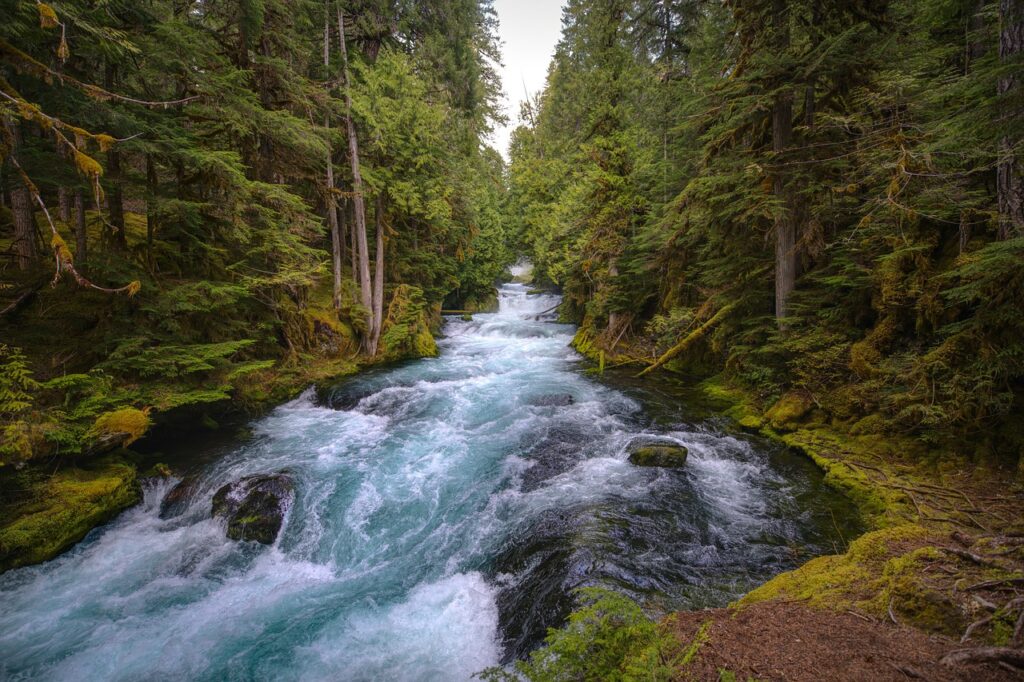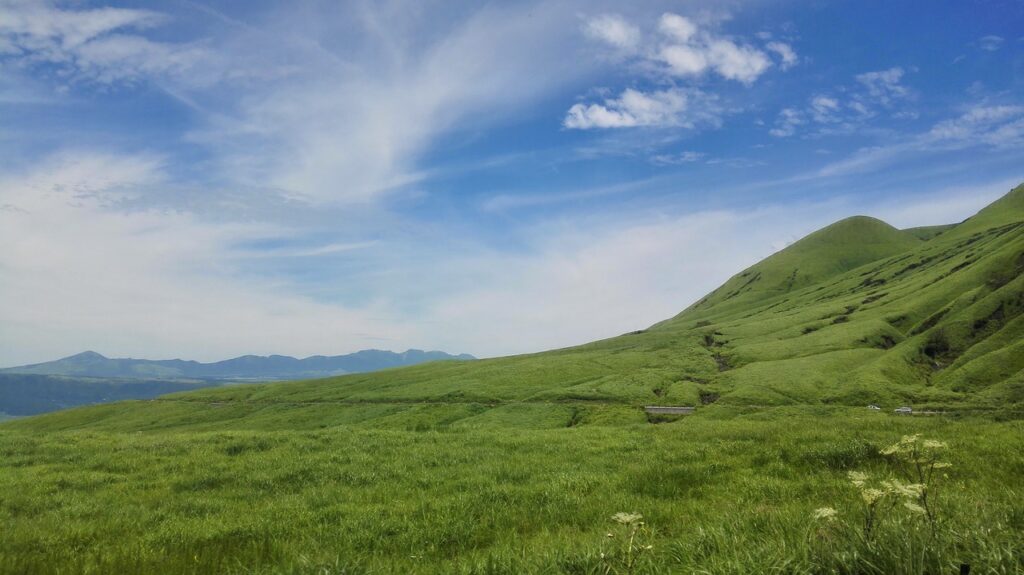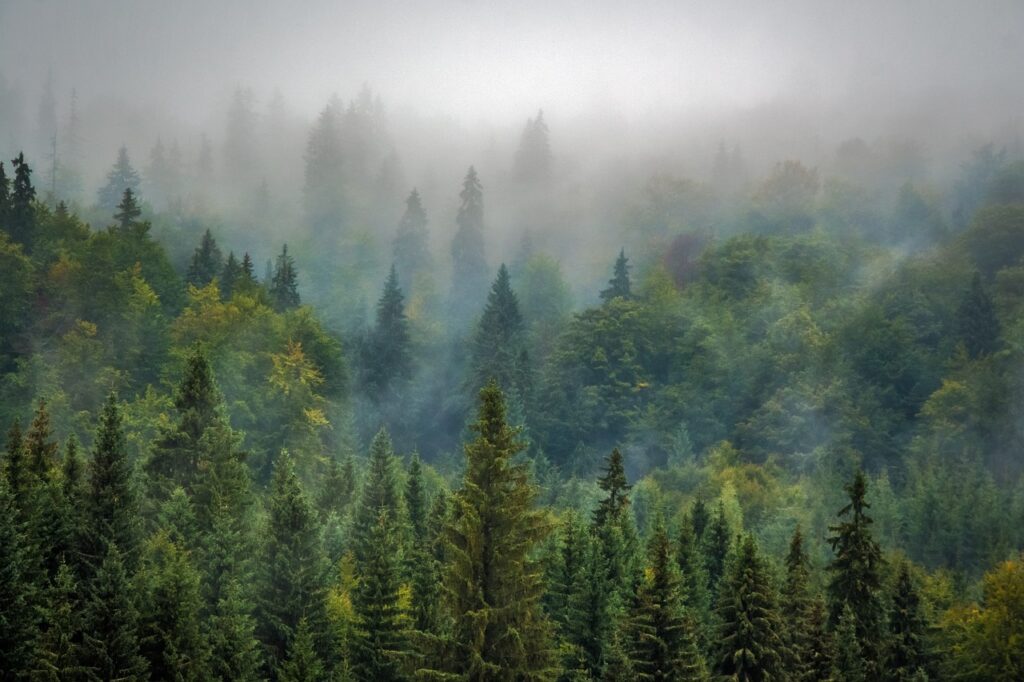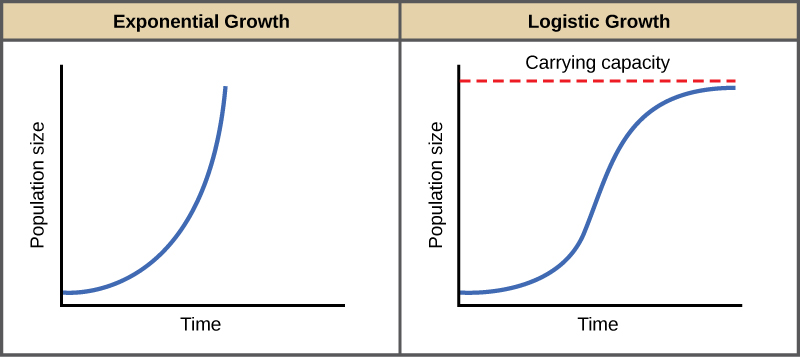
ECOLOGY
Welcome to the World of Ecology
Ecology is the scientific study of the relationships between living organisms (such as plants, animals, and microorganisms) and their environment. It examines how these organisms interact with each other and their physical environment, including factors such as climate, soil, water, sunlight, and nutrients.
Ecology is an interdisciplinary field that draws on concepts from biology, chemistry, physics, geography, and other disciplines to understand the complex interactions within ecosystems. Ecologists study the dynamics of ecosystems, including the flow of energy and nutrients, the cycling of materials, interactions and the impact of human activities on the environment.
In this blog, you will learn about various aspects of ecology, including:
- Ecological Census and Field Techniques – Learn about the methods used to study and monitor populations, communities, and ecosystems in their natural habitats. From sampling designs to data collection methods, get insights into the best practices for conducting ecological fieldwork.
- Ecological Lab Methods – Delve into the world of laboratory techniques used to analyze ecological samples and data. From molecular biology to statistical analysis, discover the latest methods and protocols used in ecological research.
- Ecological Software– Explore the range of software tools used in ecological research, from data analysis and modeling to mapping and visualization. Find out how to use software to streamline your research and gain new insights into ecological systems.
- Ecological Field Equipment – Get to know the latest field equipment and gear used in ecological research, from sampling gear to monitoring equipment. Learn how to choose the right tools for your next field project.
- Ecological Lab Equipment – Discover the range of laboratory equipment used in ecological research, from microscopes to spectrophotometers. Find out how to use lab equipment to analyze and interpret ecological samples.
- Gifts for Ecologists – Looking for a unique gift for the ecologist in your life? Explore our selection of gift ideas, from field guides to outdoor gear, that are sure to delight any nature lover.
LATEST ECOLOGY POSTS:
- How to Do a Reptile Survey
- 10 Best Hiking Boots for Wildlife Exploration
- 15 Best Headlamps for Fieldwork in 2025 – Illuminating Your Path Like a Pro
- 15 Best Drones for Wildlife Filming (that are not Dji )
- Cameras for Wildlife Photography: Picks for 2025
- 10 Best Insect Repellents for Wildlife Research
- 10 Best Waterproof Notebooks for Fieldwork
- The 10 Best Animal Behavior Books, According to Wildlife Experts
- 15 Best Spotting Scopes for Birdwatching and Wildlife
- Beginner’s Guide to Using GPS for Wildlife Tracking
- 3 Best Biological Microscopes for Adults – Expert Reviews and Recommendations
- 5 Best AmScope Microscopes of 2025 – Biotech
- 10 Best Plant Presses
- Vortex Optics Crossfire HD 1400 Review
- FLIR C5 Review: Is It Worth the Investment
- 10 Best Lab Coats for Women in 2025: Stylish and Functional Picks
- Environmental Monitoring With Arduino Review
- 10 Best Marine Biology Textbooks
- 10 Best Marine Biology Field Guides
- 10 Essential Wildlife Textbooks Every Conservationist Should Own
- 10 Best Wildlife Books to Ignite Your Passion for the Natural World
- 10 Best Biology Textbooks
- Top 10 Ecology Textbooks for Students and Researchers, Reviewed and Ranked
- 10 Best Wildlife Field Guides
- 7 Best Environmental Monitoring Handbook
- 10 Best Environmental Science Textbooks
- How to Do a Mammal Survey
- Best Ecology Universities in the US
- How to Do a Bird Survey?
- Best Wildlife Biology Graduate Programs
- Introduction to Ecology
- Best Wildlife Biology Degree Programs in the US
- How to Apply for Wildlife Research Grants
- Grants and Funding Opportunities for Wildlife Research
- Ecology Surveys
- How to Become a Wildlife Biologist
- Biodiversity Monitoring Protocols
- Wildlife Ecology Graduate Programs
- Wildlife Dna Extraction Protocol Basics
- Best Marine Biology Degree Programs in the US
- Best Ecology Bachelor’s in USA
- Best Ecology Graduate Programs in the World
- Pellet Count Method Wildlife
- Sig Sauer Kilo1000 Monocular Review
- MiLESEEY IONJET 2 Range Finder Review
- Mutualistic Relationships in Nature
- TIDEWE Rangefinder: A Comprehensive Review
- Ecologist Salary Range
- Plankton Tow Methods
- Zooplankton Sampling Techniques
- Carnivore Scat Analysis Techniques
- Plankton Preservation Techniques
- Microplankton Sampling Equipment
- Nanoplankton Analysis Methods
- Thermal Imaging for Wildlife Surveys
- Plankton Biomass Estimation
- Scat Survey Equipment List
- 4 Best Mist Nets for Bird Research and Conservation in 2025
- 15 Best Thermal Imaging Cameras of 2024: Cutting-Edge Heat Detection Reviewed
- 15 Best Rangefinders of 2024: Precision at Your Fingertips
- Vegetation Sampling Methods for Ecological Research
- Acoustic Monitoring Techniques for Bird Species Identification
- Field Methods for Assessing Habitat Fragmentation Impact
- Ecological Census Data Management and Visualization Tools
- Remote Sensing Techniques for Land Cover Classification
- Camera Trap Setup for Wildlife Surveillance
- Wildlife Trail Camera Tips
- Trail Camera Placement for Wildlife
- 15 Essential Wildlife Camera Trap Accessories for Unparalleled Shots
- LaMotte R-3633-05 Freshwater Aquaculture Kit Review
- The 11 Most Fin-tastic Graduation Gifts for Marine Biologists
- 12 Best Gifts for Biologists
- Management Strategies for Preserving Biodiversity in National Parks
- 10 Best Trail Cameras of 2025: Capture the Wild With These Top-Rated Picks
- 10 Best Wildlife Watching Binoculars for Spotting Nature's Wonders Up Close
- 10 Best Wildlife Camera Traps
- 10 Best Bird Field Guides
- Lamotte Water Testing Kit, pH Review
- NISE Environmental Science Review: A Global Concern
- Zefon Bio-Pump Plus Review: Portable Powerhouse
- National Audubon Society Field Guide Review
- Bushnell Trail Camera CORE S-4K Review
- Best Professional Insect Nets for the Serious Entomologist
- 10 Best Portable Soil Testers
- Ecological Benefits of Reforestation Projects
- 15 Best Soil Sampling Kits for Accurate Garden Analysis, Reviewed
- Adaptations of a Jaguar
- How to identify animal burrows and holes?
- What Do Wild Onions Look Like?
- How Scientists Study the Ecosystem?
- How Do Scientists Study Reptiles?
- How Do Scientists Study Fish?
- How Do Scientists Study Pollen Grains to Help Them Understand Climate Change
- How Do Entomologists Study Insects?
- How Do Scientists Study Current Climate Conditions?
- How to Identify Mammal Skulls
- How Is GIS Used in Biology
- Wildest Apex Predators: World's Top Predator Species
- Different Types of Forests in Alaska
- Types Of Pine Trees In Arizona
There are several key components of ecology:
Biodiversity, population ecology, community ecology, ecosystem ecology, and landscape ecology.
Biodiversity refers to the variety of different species of plants, animals, and microorganisms that live in an ecosystem or on Earth as a whole. It also includes the genetic diversity within each species, the variety of ecosystems, and the interactions between different species and their environment.
Population ecology is the study of the dynamics of populations of individual species. It examines the factors that affect population growth, decline, and stability, such as birth rates, death rates, immigration, and emigration.
Community ecology is the study of the interactions between different species that live in the same area. It examines the structure and function of communities, including the relationships between predators and prey, competitors, and symbionts.
Ecosystem ecology is the study of the interactions between living organisms and their environment. It examines the flow of energy and nutrients through ecosystems, and the factors that affect ecosystem processes, such as primary production, decomposition, and nutrient cycling.
Landscape ecology is the study of the interactions between different ecosystems and the patterns of landscape structure and function. It examines the ways in which different ecosystems are connected and interact, and the effects of human activities on landscape patterns and processes.
Together, these five fields of study provide a comprehensive understanding of the natural world and the interactions between living organisms and their environment.
Ecology has many practical applications in:
- Conservation biology: The preservation and protection of threatened and endangered species, ecosystems, and habitats.
- Environmental management: The management of natural resources, such as forests, fisheries, and water resources, to ensure their sustainability.
- Sustainable development: The development of policies and practices that balance human needs with environmental protection.
- Climate change mitigation: The study of the impact of human activities on the climate and the development of strategies to reduce greenhouse gas emissions.
- Public health: The study of the relationships between environmental factors and human health, including the impact of pollution, climate change, and other environmental stressors.
By understanding the complex relationships within ecosystems, ecology provides a framework for addressing some of the most pressing environmental challenges of our time.
Key Concepts in Ecology
Ecosystems and Biomes
An ecosystem is a community of living organisms interacting with their physical environment. These interactions form a complex network of relationships involving the flow of energy and the cycling of nutrients. Ecosystems can vary greatly in size and complexity, from small ponds to vast forests and oceans.
Biomes are large geographic areas characterized by specific climatic conditions, flora, and fauna. Each biome contains multiple ecosystems. Examples of biomes include tropical rainforests, deserts, grasslands, tundras, and freshwater ecosystems. Each biome supports unique biodiversity and ecological processes.




Types of Ecosystems:
- Terrestrial Ecosystems: Forests, grasslands, deserts, and tundras.
- Aquatic Ecosystems: Freshwater (lakes, rivers) and marine (oceans, coral reefs).
Examples of Biomes:
- Desert Biome: Hot and dry, with limited vegetation and rainfall. Examples: Sahara Desert, Mojave Desert.
- Grassland Biome: Temperate regions with grasses and few trees. Examples: Prairies of North America, Steppes of Eurasia.
- Tropical Rainforest Biome: Hot and humid, with dense vegetation and high biodiversity. Examples: Amazon Rainforest, Congo Basin.
- Temperate Rainforest Biome: Cool and wet, with coniferous trees and high rainfall. Examples: Pacific Northwest (USA), Valdivian Rainforests (South America).
- Temperate Deciduous Forest Biome: Cool and temperate, with deciduous trees that lose leaves in winter. Examples: Eastern North America, European forests.
- Boreal Forest Biome (Taiga): Cold and subarctic, with coniferous trees and low biodiversity. Examples: Alaska, Canada, Russia.
- Tundra Biome: Cold and treeless, with low vegetation and permafrost. Examples: Arctic tundra, Alpine tundra.
- Mountain Biome: Cold and harsh, with limited vegetation and unique adaptations. Examples: Rocky Mountains, Himalayas, Andes.
- Freshwater Biome: Rivers, lakes, and wetlands with aquatic life. Examples: Mississippi River, Lake Baikal, Everglades.
- Marine Biome: Oceans and seas with diverse marine life. Examples: Coral reefs, Kelp forests, Open ocean.
- Arctic/Antarctic Biome: Extreme cold and darkness, with limited vegetation and unique adaptations. Examples: Arctic tundra, Antarctic ice sheets.
- Savanna Biome: Grasslands with scattered trees, warm and temperate. Examples: African savannas, Australian savannas.
- Alpine Biome: High-altitude regions with unique plant and animal adaptations. Examples: Mountain meadows, Alpine lakes.
- Coral Reef Biome: Shallow, tropical waters with diverse marine life. Examples: Great Barrier Reef, Caribbean reefs.
These are just a few examples of biomes, and there can be some overlap between them. Each biome has its unique characteristics and supports a specific range of plant and animal life.
Energy Flow and Nutrient Cycles
Energy Flow and Nutrient Cycles are two interconnected processes that occur in ecosystems. Let’s dive into each of them:
Energy Flow:
Energy flow refers to the transfer of energy from one organism to another within an ecosystem. This process occurs through the food chain, where energy is passed from one trophic level to the next. There are three main components of energy flow:
1. Producers: Autotrophic organisms like plants, algae, and cyanobacteria that convert sunlight into chemical energy through photosynthesis.
2. Consumers: Heterotrophic organisms like animals, fungi, and bacteria that obtain energy by consuming other organisms or organic matter.
3. Decomposers: Organisms like bacteria and fungi that break down dead organic matter, releasing nutrients back into the environment.
Energy flows from one trophic level to the next through consumption, with each level losing some energy as heat. This is known as the 10% rule, where only about 10% of the energy is transferred from one trophic level to the next.
Nutrient Cycles:
Nutrient cycles, also known as biogeochemical cycles, refer to the movement of essential nutrients like carbon, nitrogen, oxygen, and phosphorus through the ecosystem. These nutrients are necessary for life and are often limiting factors in ecosystem productivity.
There are several key nutrient cycles:
1. Carbon Cycle: Carbon is exchanged between the atmosphere, oceans, land, and living organisms through processes like photosynthesis, respiration, and decomposition.
2. Nitrogen Cycle: Nitrogen is converted between its various forms (e.g., NH3, NO3-, N2) through processes like nitrogen fixation, ammonification, nitrification, and denitrification.
3. Phosphorus Cycle: Phosphorus is cycled through the ecosystem through geological processes like weathering, erosion, and sedimentation, as well as biological processes like decomposition and nutrient uptake.
Interconnection between Energy Flow and Nutrient Cycles:
Energy flow and nutrient cycles are closely linked. Energy from the sun drives the nutrient cycles, and the availability of nutrients can limit energy flow through the ecosystem. For example:
* Photosynthesis, which is driven by energy from the sun, requires nutrients like nitrogen and phosphorus.
* Decomposition, which releases nutrients back into the environment, is an energy-requiring process.
* Nutrient availability can limit the growth and productivity of organisms, which in turn affects energy flow through the ecosystem.
Population Dynamics
Population dynamics study the changes in population sizes and compositions over time and space. This field of ecology is crucial for understanding the factors that influence the growth, stability, and decline of populations.
Models of Population Growth:
– Exponential Growth: Characterized by rapid population increase under ideal conditions, forming a J-shaped curve.
– Logistic Growth: Population growth slows as it approaches the carrying capacity of the environment, forming an S-shaped curve.
Factors Affecting Population Size:
– Birth Rate: Number of births in a population over a specific period.
– Death Rate Number of deaths in a population over a specific period.
– Immigration: Movement of individuals into a population.

ECOLOGICAL INTERACTIONS
Ecological interactions refer to the relationships between organisms and their environment, as well as the interactions between different organisms. These interactions can be categorized into several types:
Intra-specific Interactions
- Competition: competition among individuals of the same species for resources such as food, water, and shelter.
- Cooperation: individuals of the same species working together to achieve a common goal, such as foraging or defending against predators.
- Mating: the process by which individuals of the same species reproduce.
Inter-specific Interactions
- Predation: the act of one organism (the predator) consuming another organism (the prey).
- Parasitism: a relationship in which one organism (the parasite) benefits at the expense of another organism (the host).
- Mutualism: a relationship in which both organisms benefit, such as the relationship between clownfish and sea anemones.
- Commensalism: a relationship in which one organism benefits and the other is not affected, such as the relationship between remora fish and sharks.
- Competition: competition between different species for resources such as food, water, and shelter.
- Amensalism: a relationship in which one organism is inhibited or harmed by the presence of another organism.
- Synzoochory: a relationship in which one organism is transported by another organism, such as the relationship between birds and seeds.
Abiotic Interactions
- Physical Environment: interactions between organisms and physical factors such as temperature, light, and water.
- Chemical Environment: interactions between organisms and chemical factors such as pH, nutrients, and toxins.
- Geographical Environment: interactions between organisms and geographical factors such as altitude, latitude, and terrain.
Other Ecological Interactions
- Symbiosis: a close, long-term relationship between different species.
- Keystone Species: a species that plays a unique and crucial role in its ecosystem.
- Indicator Species: a species that serves as an indicator of the health of its ecosystem.
- Ecological Niche: the role of a species in its ecosystem.
NICHE IN ECOLOGY
In ecology, a niche refers to the specific role and position of a species within its environment and community. It encompasses the unique set of resources, conditions, and interactions that a species requires to survive, grow, and reproduce. A niche is often described as the “job” or ” profession” of a species within its ecosystem.
The concept of niche was first introduced by Joseph Grinnell in 1917, and it has since become a fundamental concept in ecology. A species’ niche is determined by its physical and behavioral characteristics, such as its size, shape, diet, habitat, and interactions with other species.
There are two types of niches: fundamental niche and realized niche. The fundamental niche refers to the full range of conditions and resources that a species can potentially exploit, while the realized niche refers to the actual range of conditions and resources that a species uses in the presence of other species.
The importance of niche in ecology cannot be overstated. Understanding the niche of a species is crucial for several reasons:
- Species coexistence: Niches allow multiple species to coexist in the same environment by reducing competition for resources. By occupying different niches, species can partition resources and minimize interactions.
- Ecosystem functioning: The unique combination of species’ niches determines the functioning of ecosystems. For example, pollinators and seed dispersers play critical roles in maintaining plant populations.
- Biodiversity maintenance: Niches help maintain biodiversity by providing opportunities for species to adapt and evolve. As species occupy different niches, they can develop distinct traits and characteristics.
- Invasive species management: Understanding the niche of an invasive species can help predict its potential impact on native ecosystems and inform management strategies.
- Conservation and restoration: Knowledge of a species’ niche is essential for effective conservation and restoration efforts. By recreating the conditions and resources required by a species, conservationists can increase the chances of successful reintroduction or restoration.
- Climate change mitigation: As climate change alters environmental conditions, understanding the niche of species can help predict how they will respond to changing conditions and inform strategies for mitigating impacts.
The concept of niche is a fundamental aspect of ecology, and understanding the niche of a species is crucial for maintaining biodiversity, ecosystem functioning, and conserving species.
The importance of niche in ecology cannot be overstated. Understanding the niche of a species is crucial for several reasons:
- Species coexistence: Niches allow multiple species to coexist in the same environment by reducing competition for resources. By occupying different niches, species can partition resources and minimize interactions.
- Ecosystem functioning: The unique combination of species’ niches determines the functioning of ecosystems. For example, pollinators and seed dispersers play critical roles in maintaining plant populations.
- Biodiversity maintenance: Niches help maintain biodiversity by providing opportunities for species to adapt and evolve. As species occupy different niches, they can develop distinct traits and characteristics.
- Invasive species management: Understanding the niche of an invasive species can help predict its potential impact on native ecosystems and inform management strategies.
- Conservation and restoration: Knowledge of a species’ niche is essential for effective conservation and restoration efforts. By recreating the conditions and resources required by a species, conservationists can increase the chances of successful reintroduction or restoration.
- Climate change mitigation: As climate change alters environmental conditions, understanding the niche of species can help predict how they will respond to changing conditions and inform strategies for mitigating impacts.
BIODIVERSITY AND ITS IMPORTANCE
Biodiversity refers to the variety of different species of plants, animals, and microorganisms that live in an ecosystem or on Earth as a whole. It also includes the genetic diversity within each species, the variety of ecosystems, and the interactions between different species and their environment. Biodiversity is essential for maintaining the health of ecosystems and the planet as a whole.
Importance of Biodiversity:
- Ecosystem Services: Biodiverse ecosystems provide essential services such as air and water purification, soil formation, and climate regulation. These services are crucial for human well-being and the economy.
- Food Security: Many crops and livestock rely on biodiversity to maintain their health and productivity. Without biodiversity, food production would decline, leading to food insecurity.
- Medicine: Biodiverse ecosystems are a source of new medicines and treatments. Many modern medicines are derived from plants and animals, and the discovery of new species can lead to new treatments.
- Climate Change: Biodiverse ecosystems can help mitigate climate change by storing carbon, moderating weather patterns, and providing natural barriers to extreme weather events.
- Soil Formation and Nutrient Cycling: Biodiverse ecosystems help to form and maintain soil, which is essential for plant growth and agriculture. Nutrient cycling, which is critical for plant growth, is also maintained by biodiverse ecosystems.
- Water Purification: Biodiverse ecosystems help to purify water by filtering out pollutants and sediments.
- Recreation and Tourism: Biodiverse ecosystems provide opportunities for recreation and tourism, which can support local economies.
- Cultural Significance: Biodiverse ecosystems have cultural and spiritual significance for many communities, providing a sense of identity and connection to the natural world.
Threats to Biodiversity:
- Habitat Destruction: Human activities such as deforestation, urbanization, and infrastructure development have led to widespread habitat destruction.
- Overexploitation: Overhunting, overfishing, and the unsustainable harvesting of resources have led to population declines and even extinctions.
- Climate Change: Climate change is altering ecosystems, leading to changes in species distributions, behavior, and extinction risk.
- Pollution: Pollution from human activities such as agriculture, industry, and transportation is harming ecosystems and species.
- Invasive Species: Non-native species can outcompete native species for resources, leading to population declines and even extinctions.
Conservation Efforts:
- Protected Areas: Establishing protected areas such as national parks and wildlife reserves can help to safeguard biodiversity.
- Sustainable Agriculture: Implementing sustainable agricultural practices can help to reduce the impact of agriculture on biodiversity.
- Restoration Ecology: Restoring degraded or damaged ecosystems can help to recover biodiversity.
- Research and Monitoring: Monitoring and research efforts can help to understand the impact of human activities on biodiversity and develop effective conservation strategies.
- Community Engagement: Engaging with local communities can help to promote biodiversity conservation and support sustainable livelihoods.
